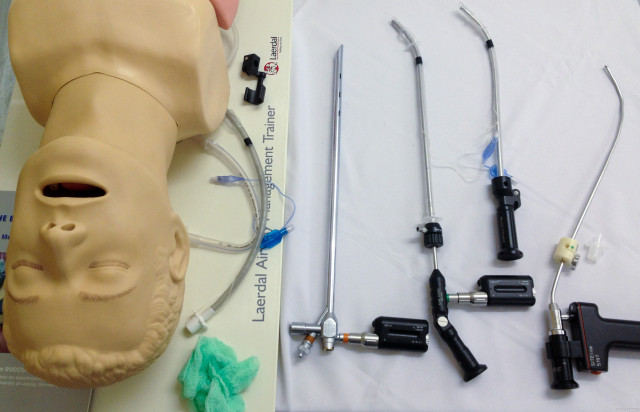A recent explosion of Twitter discussion led me to do a quick search to refresh my own recollection on this topic – the number of intubations to become proficient (ie: what is the learning curve to reach X level of success?) My memory has a figure of 50-80 based on the level of expertise and setting, but it is always a good idea to refresh one’s grasp of the literature on the subject. I present here the results of a brief literature search – please note that I have not reviewed these papers more than a cursory inspection, so make your own conclusions. (To be updated if time allows). There is a little FOAM on the subject. While this is certainly not intended to be an exhaustive review or meta-analysis of the subject, here are various resources and studies to help answer this question:
- Konrad et al in Anesth Analg 1998: Found that intubation was the easiest of anaesthesia procedural skills to learn by anaesthesia residents amongst those studied (ETI>Spinal>Epidural>Brachial block>Arterial line), with 90% success rate being reached at a mean of 57 procedures. However, even after 80 intubations, 18% still required assistance. Check out the paper here.
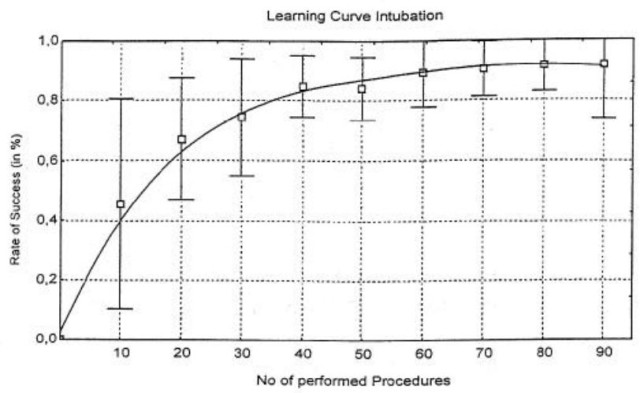
- De Oliveira Filho in Anesth Analg, 2002: 895 intubations by 7 anaesthesia residents used to create a cumulative sum success (CUSUM) model. 4/7 residents reached acceptable success (80%…!) after 79 +/- 47 endotracheal intubations (ETIs). Article here.
- Wang et al. in PEC, 2005: Data from 60 US paramedic training programs over a two year period. Few students (4%) performed more than 30 ETI’s; almost none more than 50. Complex statistical model predicted 90% success rate (SR) after ~16 intubations, but there was significant difference depending on where these intubations took place (OR vs. ED vs ICU vs. preshospital), with the latter requiring significantly more practice, Paper online here.
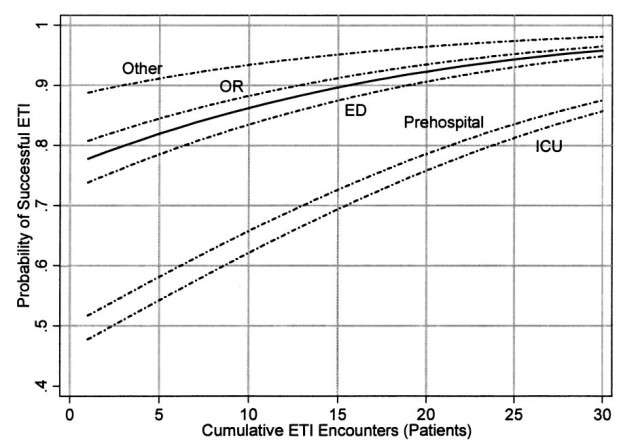
- Savoldelli et al in Eur J Anaesthesiol, 2009: The type of laryngoscope matters. In a mannequin, the learning curve flattened most rapidly with the AirTraq and Macintosh laryngoscopes, whereas the McGrath and Glidescope reached a later plateau with residual delay in speed of intubation. Paper not open access; see PubMed.
- Komatsu et al in Anesthesiology, 2010: 9/15 non-anaesthesia interns showed a median requirement of 35 ETIs to achieve 80% success. Where a 90% SR was used, only 1/15 reached this level in 35 attempts. More interns were able to learn acceptable face-mask ventilation skills within a limited number of cases than ETI. See paper at Anesthesiology online here.
- Toda et al in IJEM, 2013: 1045 ETIs by 32 paramedics in the OR. First-pass success rates over 30 attempts ranged 71-87%, but complications still averaged 31% after 30 attempts! 90% SR not achieved in 30 intubations by the majority of participants. Sinusoidal learning curve that showed little increase in success until after ~13 patients. Click here or the image to read the paper online.
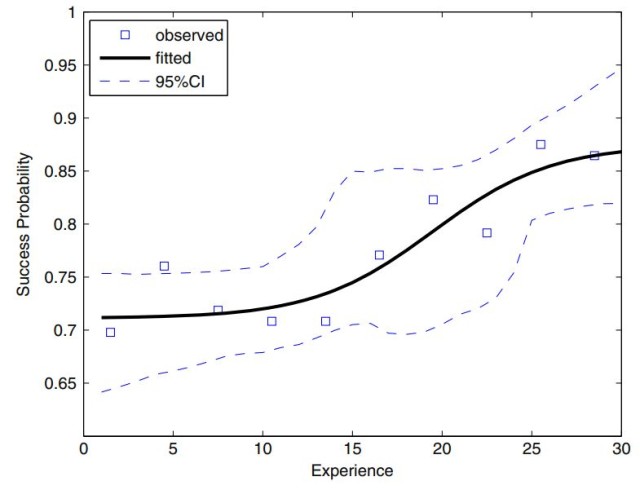
- Je et al. in EMJ, 2013: Cumulative summation learning curve of 3 junior emergency medicine residents (first 2 years of EM training) looked at 90% proficiency (success rate [SR} of 90%), and found the mean number of endotracheal intuabtion (ETI) cases to achieve this was 75 (74.7; 95% CI 62.0 to 87.3). 80% SR was achieved after ~30 cases. Noteably, competency continued to improve after >100 cases. See here on ResearchGate to access the paper.
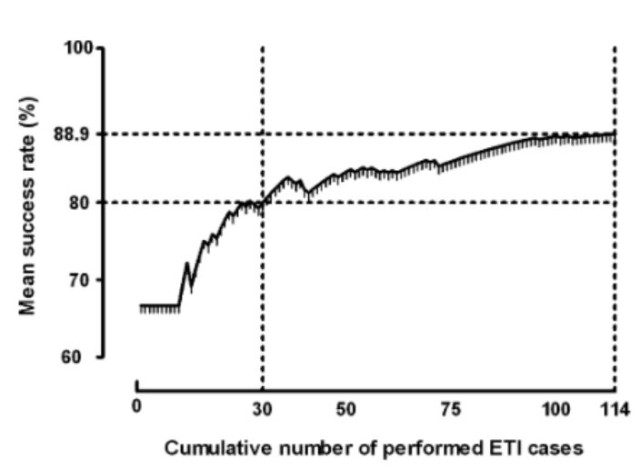
- Rujirojindakul et al, in Anes Research Prac, 2014: Cumulative summation technique evaluating 11 nurse anaesthetists in the first 3 months of their training. SR of 80% deemed acceptable (!), median of 22 intubations required to reach this level. Paper open access here.
- Ospina et al. in Rev Colomb Anestesiol, 2014: 764 ETIs performed by 4 anaesthesia trainees. Confusingly, they rate the level at which 75% of trainees reach 95% success (what does this mean in real life?) as a mean of 65 cases. Read the paper here and comment if you understand it better!
What does this quick search say to me? Firstly, there is a large discrepancy between some sources of the literature, but this is probably due to the dramatic heterogeneity of the study designs and outcomes. If you accept 90% success rate as acceptable for intubation proficiency (and, to be honest, I don’t), to be sure of your skills you need to make sure you put in at least 75 tubes. If your aim is “mastery” this figure is likely to be far higher…but then becomes an almost philosophical argument about the nature of mastery and the absence of any form of certainty in real life.
What do you think? Post comments below!
